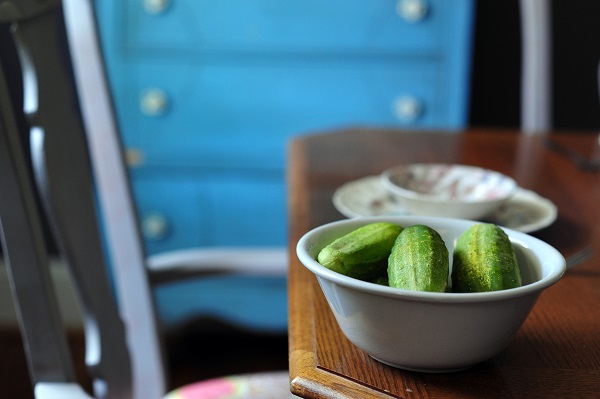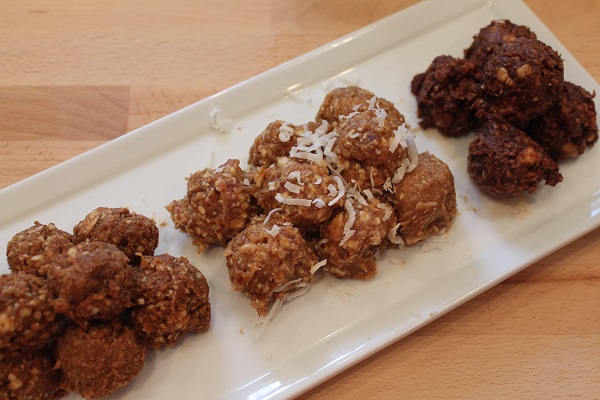There are two sides to feeding children: one is to ensure they are nourished so they can grow and thrive and the other is to instill in them a healthy, lasting relationship with food. Simple enough, right? Not exactly! In reality, these two goals are often at odds with each other.
Feeding children can be one of the most frustrating and mentally and physically exhausting parts of parenting. However, there are strategies to help better align these goals and it starts with looking beyond food and realizing that feeding is equally as important as food.
Feeding is Equally as Important as Food
Good feeding relationships start at DAY ONE (read more about the Top 5 Infant and Toddler Feeding Mistakes). It’s not all about how many pieces of broccoli they did/did not eat. There are future adults in your children and you want food to be an enjoyable, nourishing, stress-free part of their lives.
HOW you feed your child is equally as important as WHAT you feed your child.
Over an 18-year childhood, you will feed your child more than 28,000 times (assuming age-appropriate meals and snacks). Therefore, you’ll want to reduce the struggles that can happen with feedings by developing your child’s trust with food and eating
HOW you feed your child is equally as important as WHAT you feed your child! #parentingwin #saslife Click To Tweet
Feeding Styles
The first step to developing positive food parenting strategies is to figure out your feeding style- the approach and attitude used when feeding children. Feeding styles are closely related to parenting styles and often come from how you were raised and your relationship with food.
Feeding style does not cause specific feeding issues but research shows an association between feeding style and feeding issues. And realize that a child’s personality plays a huge role in how they respond to food. You may need to be flexible with your feeding style and use different approaches for each child in your family. Be patient!
The four main feeding styles are authoritarian, indulgent (also called permissive), uninvolved (also called neglectful) and authoritative. Read through the descriptions of each style below and see which one resonates the most with your current approach to feeding children (base your decision on meals at home, not birthday parties, holidays or restaurants).
Authoritarian
- Low sensitivity to child’s hunger, fullness and food preferences
- Very structured with clearly defined rules
- Demanding on how much the child eats (clean your plate club, take one more bite, etc.)
- “Do as I say, not as I do”
- Use rewards to incentivize children to eat certain foods/amounts
- Restrictive with food if child is not meeting expectations (no dessert if you don’t finish your veggies)
Sample Dialogue
Child: “I don’t want broccoli.”
Parent: “You have to eat the broccoli or you won’t get dessert/TV time/etc.”
Result: Child that is out of touch with hunger/fullness cues and more inclined to be overweight, have lower fruit/veggie intake and value sweets over more nutritious foods.
Indulgent
- Very responsive to child’s appetite
- Little structure or monitoring of eating patterns, no regular meal/snack pattern
- Low demands on what/how much child eats
- Child often takes the lead on food choice
- “Yes” parent: short order cook, immediately finds food if child says he is hungry with no regards to meal pattern/timing (i.e. grazing between meals)
Sample Dialogue
Child: “I don’t want broccoli.”
Parent: “What do you want? I will fix you something else.”
Result: Child that is more inclined to be a picky eater, overweight, throw tantrums when unfamiliar or disliked food is offered and eat more high fat foods and sweets.
Uninvolved
- Low responsiveness to child’s appetite and food preferences
- Low structure with meal/snack pattern, irregular meal times, skipped meals
- Often has an empty fridge (doesn’t shop regularly)
- Low demands on what/how much child eats
Sample Dialogue
Child: “When is dinner? What’s for dinner?”
Parent: “I have no idea.”
Result: Child that is more inclined to have weight problems (over or underweight), be insecure about food and be more focused on food.
Authoritative
- Highly responsive to child’s appetite and food preferences
- Love with limits, structured feeding, reasonable choices, boundaries with eating
- Warm, involved and sensitive to child but encourages child to be mature and have self-control
- Based on trust- parent believes child can self-regulate
- Very demanding with meal/snack pattern
- Predictable meal patterns in predictable places: parent chooses selection of foods and helps child eat based on appetite- child has a say but doesn’t rule
Sample Dialogue
Child: “I don’t want broccoli. It is gross.”
Parent: “We don’t say bad things about the food we eat. You don’t have to eat something you don’t like. There is plenty of food on the table to choose from.”
Result: Child that is more inclined to be at a healthy weight, eat a wider variety of nutritious foods, be more active and self-regulate food intake while being protective against emotional eating.
Was there a clear front runner for you? For most people, they quickly resonate with one feeding style over another. However, you may be a blend of more than one and you may have different feeding styles for different children- that’s all okay!
What’s Best?
So, which feeding style is “the best” and most helpful in effectively promoting healthy weight, self-regulated eating and positive attitudes and relationship with food?? AUTHORITATIVE!
The Authoritative Parent is like a teacher or coach- firm but still receptive to the child’s needs. Being too overbearing is no better than being too lenient. This style can be summed up with the simple phrase: Love with Limits.
Approaching food and mealtimes with love with limits will help minimize feeding battles and allow children to establish healthy associations with food while being well nourished- the two main goals of feeding children.
Being the mom of a toddler, I fully realize this is much easier said than done! However, we’ll guide you through how to do this while creating positive mealtime memories next week! Stay tuned!
Sources
Jill Castle, RDN, Feeding Matters Podcast
Feeding Bytes
The Picky Eating Solution by Deborah Kennedy, PhD
No-Bake Energy Bites
Using simple ingredients most people have in their pantry, this super easy snack is one the entire family will love! Get your children involved- let them pick out different ingredient combinations and give them the task of rolling out the bite-size balls. The options are endless! In addition to the recipes below, also try these “sugar” cookie and paleo energy bites.
Cinnamon Caramel Apple Energy Bites
Recipe from: Cupcakes and Kale Chips
Makes 16 bites
Ingredients
½ cup pitted dates
1 cup dried apples (not freeze dried) with no added sugar
½ cup chopped almonds or unsweetened shredded coconut
½ tsp cinnamon
Directions
- Combine all of the ingredients in a food processor and process until it forms a thick paste.
- Using about a tablespoon of the mixture, roll into bite-sized balls.
- Store in a sealed container in the fridge for up to a week, or in the freezer for an even longer shelf life.
- Enjoy 1-2 bites for a snack or sweet treat.
Date Energy Bites
Recipe from: Detoxinista
Makes 24-32 bites
2 cups cashews, or other nut/seed of choice
1 cup shredded unsweetened coconut
2 cups soft Medjool dates, pitted
2 Tbsp coconut oil, melted
½ tsp sea salt
1 tsp vanilla extract
Directions
- Process the walnuts and coconut in a large food processor fitted with an "S" blade until crumbly.
- Add in the dates, coconut oil, vanilla and sea salt and process again until a sticky, uniform batter is formed.
- Scoop the dough by heaping tablespoons, then roll between your hands to form bite-sized balls.
- For a gourmet-looking truffle, roll in shredded coconut or cocoa powder before chilling! (optional)
- Arrange them on a baking sheet lined with parchment paper, then place in the freezer to set for at least an hour before serving.
- Store in a sealed container in the fridge for up to a week, or in the freezer for an even longer shelf life.
- Enjoy 1-2 bites for a snack or sweet treat.
Almond Joy Energy Bites
Recipe from: The Healthy Maven
Makes 40 bites
Ingredients
2 cups pitted dates
2 cups almonds
¼ cup unsweetened cocoa powder
¾ cup unsweetened coconut flakes, divided
¼ tsp sea salt
½ tsp vanilla
1-2 Tbsp water
Directions
- Reserve ½ cup coconut flakes for rolling.
- Combine the remaining coconut flakes, 1 Tbsp water, and other ingredients in a food processor and process until it forms a thick paste.
- Add an additional tablespoon of water if the mixture isn’t coming together.
- Using about a tablespoon of the mixture, roll into bite-sized balls.
- Roll each ball into the reserved coconut flakes.
- Store in a sealed container in the fridge for up to a week, or in the freezer for an even longer shelf life.
- Enjoy 1-2 bites for a snack or sweet treat.








